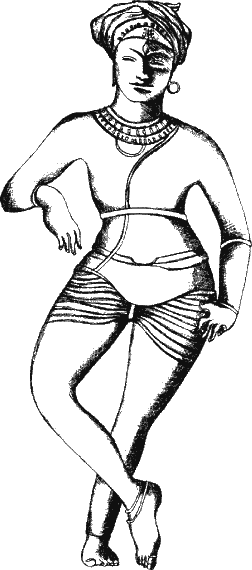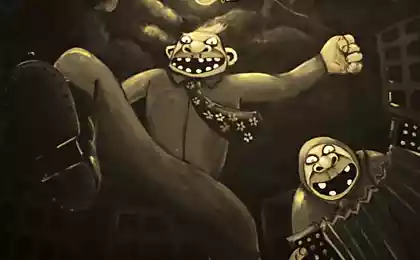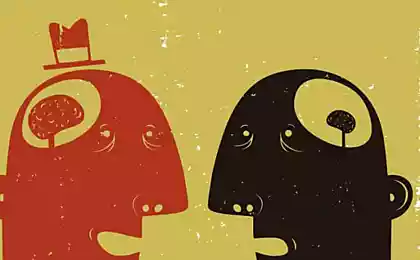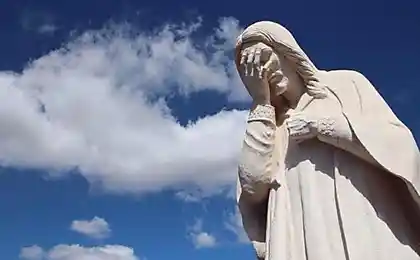480
On the theme of tolerance ...
About the disappearance of a civilization ... Read at least a fragment.
At the origins of Indian civilization was much less known culture of the kingdom of Harappa, 2900-1500 gg. BC X., which are two major cities - the capital of Harappa and is not inferior to her Moenjodaro.
The population of the two cities reached about 80 000 people, which was a lot of the time. It was a very developed city, with streets intersecting at right angles; there appeared first in the history of water supply and sewerage system first. It seems the people of Harappa first learned to grow cotton.
It is suggested that Harappa and Mohenjo-Daro were founded by the Sumerians, who had fled from the invading Indo-Europeans from the west.
The reasons for the disappearance of this civilization have long remained unsolved.
In 2000 it was discovered the ditch where a thousand corpses were found, as well as items that relate to the Harappan civilization. Gradually, archaeologists reconstruct the history of this nation. Residents of Harappa built walls, allowing them to withstand the onslaught of Indo-European conquerors. Convinced that sufficiently protected, they directed their efforts to the development of culture. They have created a very subtle art, music, language. In the letter, they used more than 270 icons that have not yet been deciphered. It was a peace-loving people. The main income they brought cotton trade and production of copper utensils, alabaster vases, precious stones, particularly lapis lazuli, which many people consider the ritual stone Lapis is found only in this region, and "lazuritny trade route" stretched to the Egypt, where the product out of the blue stone found in the tombs of the pharaohs.
Indo-Europeans failed to capture Harappa, but they are not gone from her walls, and harapptsy finally began to hire them to work - to build houses, roads, and aqueducts. The Harappa arose a class of Indo-European workers. Employers treat them well, especially considering the slave mores of the era. But the Indo-Europeans give birth to many more children than people of Harappa soon flooded neighborhood cities around the sow terror gang of young thugs. They began to attack the caravans, thereby causing substantial damage to trade.
It was then that the Indo-Europeans, and decided it was their time. They lived in the town of tribesmen unleashed a civil war. Eventually harapptsev gathered at the edge of a common grave, and all cut. Indo-Europeans invaded and looted Harappa and Mohenjo-Daro, but they did not know how to manage such cities and citadels gradually came to a complete standstill. After a while, the Indo-Europeans altogether gone, leaving behind two ghost town and ditches filled with corpses of those who once gave them a job.
Bernard Werber, "Breath of the Gods»
Read

Source:
At the origins of Indian civilization was much less known culture of the kingdom of Harappa, 2900-1500 gg. BC X., which are two major cities - the capital of Harappa and is not inferior to her Moenjodaro.
The population of the two cities reached about 80 000 people, which was a lot of the time. It was a very developed city, with streets intersecting at right angles; there appeared first in the history of water supply and sewerage system first. It seems the people of Harappa first learned to grow cotton.
It is suggested that Harappa and Mohenjo-Daro were founded by the Sumerians, who had fled from the invading Indo-Europeans from the west.
The reasons for the disappearance of this civilization have long remained unsolved.
In 2000 it was discovered the ditch where a thousand corpses were found, as well as items that relate to the Harappan civilization. Gradually, archaeologists reconstruct the history of this nation. Residents of Harappa built walls, allowing them to withstand the onslaught of Indo-European conquerors. Convinced that sufficiently protected, they directed their efforts to the development of culture. They have created a very subtle art, music, language. In the letter, they used more than 270 icons that have not yet been deciphered. It was a peace-loving people. The main income they brought cotton trade and production of copper utensils, alabaster vases, precious stones, particularly lapis lazuli, which many people consider the ritual stone Lapis is found only in this region, and "lazuritny trade route" stretched to the Egypt, where the product out of the blue stone found in the tombs of the pharaohs.
Indo-Europeans failed to capture Harappa, but they are not gone from her walls, and harapptsy finally began to hire them to work - to build houses, roads, and aqueducts. The Harappa arose a class of Indo-European workers. Employers treat them well, especially considering the slave mores of the era. But the Indo-Europeans give birth to many more children than people of Harappa soon flooded neighborhood cities around the sow terror gang of young thugs. They began to attack the caravans, thereby causing substantial damage to trade.
It was then that the Indo-Europeans, and decided it was their time. They lived in the town of tribesmen unleashed a civil war. Eventually harapptsev gathered at the edge of a common grave, and all cut. Indo-Europeans invaded and looted Harappa and Mohenjo-Daro, but they did not know how to manage such cities and citadels gradually came to a complete standstill. After a while, the Indo-Europeans altogether gone, leaving behind two ghost town and ditches filled with corpses of those who once gave them a job.
Bernard Werber, "Breath of the Gods»
Read

Source:






















